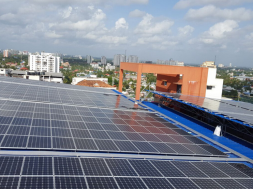
The dues include those to independent power producers (about 30% of the total) and state-run utilities such as NTPC, DVC and NHPC.
State-run electricity distribution companies’ (discoms) dues to power producers stood at Rs 80,930 crore at the end of November 2019, up 45% from a year earlier. About 89% of these (Rs 71,673 crore) were “over-dues” with payment default of 60 days or more.
The dues include those to independent power producers (about 30% of the total) and state-run utilities such as NTPC, DVC and NHPC.
The discoms’ dues to power producers have been rising relentlessly over the past two years and this could’ve also had made them cut purchases, a trend which has reflected on the use of generation capacity (PLF) as well as power consumption pattern, both of which have been sliding. The trend of rising dues to power plants continues despite the Union power ministry implementing the letter of credit (LC) mechanism since August 2019 to compel discoms to become more disciplined in meeting payment obligations.

Discoms’ over-dues to power plants have increased 73% annually at November end. Clearly, most state-run discoms aren’t complying with the mechanism that mandates them to offer LCs to producers as payment security.
While Rajasthan alone accounts for about 31% of total over-dues of discoms across India, Tamil Nadu and Uttar Pradesh make up for another 16% and 18%, respectively. According to data available with the power ministry’s ‘praapti’ portal, private power producers to which discoms owed the most as over-dues at November end were RKM Powergen (Rs 3,384 crore), Adani Power (Rs 3,201.7 crore), Bajaj Lalitpur (Rs 2,213 crore), GMR Energy (Rs 1,930 crore) and Sembcorp Energy (Rs 1,408 crore).
NTPC’s invoices to discoms which remain not honoured as on November 30 totalled Rs 12,352 crore. Among state-run power generators, Rajasthan Rajya Vidyut Utpadan Nigam has the highest dues from discoms of Rs 19,592 crore.
Thanks partly to the Andhra Pradesh government’s decision to review the tariffs for solar and wind power projects, the country’s discoms’ over-dues to renewable power plants surged 130% y-o-y to Rs 5,867 crore.
CARE Ratings recently downgraded its rating outlook for 13 solar generators supplying power to Telangana to ‘negative’. Delayed payments impair the generating companies’ ability to service debt and exhaust their working capital. This leads to lower credit ratings and higher interest rates.
Rating agency Icra recently noted that the progress on stressed thermal asset resolution is slow, with only about 10% of the stressed capacity nearly achieving resolution, another 4% resolved, and the remaining still under stress. “Overall, about 38% stressed capacity is admitted/referred to NCLT with remaining being under resolution by the lenders,” Icra said.
Delaying payments to generators helps cash-strapped discoms manage their working capital cycles, meet short-term obligations and avoid costly working capital loans. Discoms’ financial losses stood at nearly Rs 28,000 crore at the end of FY19, up 88% y-o-y.
Union power minister RK Singh told FE in September last year that “the LC mechanism has already stopped the creation of new dues” and the issue of legacy dues would be addressed by one of the provisions in the upcoming tariff policy which would “make it compulsory for the discoms to pay the 18% delayed payment surcharge for pending dues”.
















